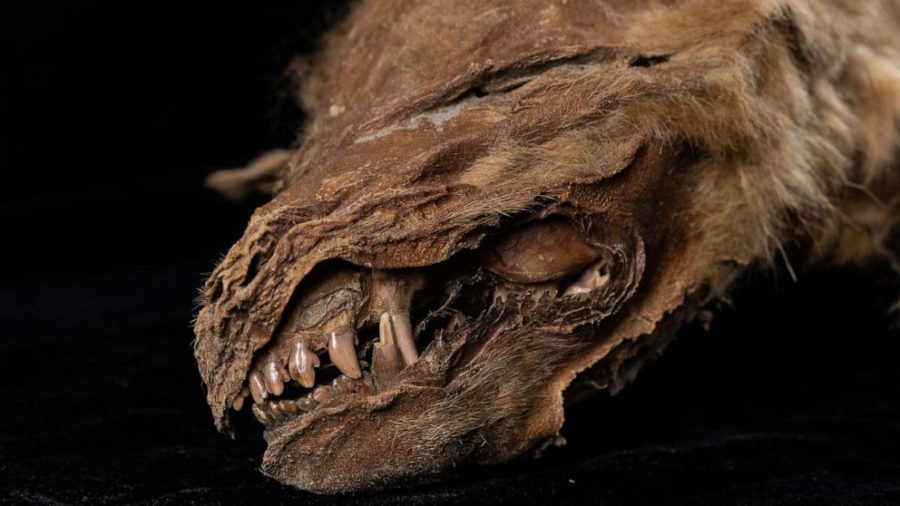“As warming temperatures and a miner chipped away at permafrost in Yukon, Canada, the earth yielded a discovery that is “incredibly rare from North America” — a historical jackpot.“
The following written content by Adriana Navarro,
Some 56,000 to 57,000 years ago, “shortly” before early homo sapiens developed a capacity for language and began migrating out of Africa, a sandy den in pre-historic Canada most likely collapsed onto a wolf pup that was about six or seven weeks old, preserving her in time as permafrost formed and the rest of the world evolved around her.

The nearby Yukon and Klondike rivers nurtured not just the changing wildlife, but settlements and nations, including the Hän-speaking people of the Tr’ondëk Hwëch’in First Nation. The Klondike River also fed the Klondike Gold Rush in 1896 into 1899, an area in the Yukon Territory of Canada that would become Dawson City at the center.
Fast-forward to the summer of July 2016. Gold miner Neil Loveless was water blasting a wall of frozen mud outside of Dawson City when he hit a layer of thawing permafrost — and something else.

Loveless told CBC North that he originally thought perhaps his discovery was a puppy that had fallen down the mine shaft. Still, he picked up the specimen, set her in a gold pan and later a freezer until a paleontologist arrived.
The permafrost had yielded not gold, per se, but perhaps something much more valuable, a study published on Dec. 21, 2020, in the journal Current Biology detailed.
The perfectly preserved Pleistocene gray wolf puppy, named Zhùr by the Tr’ondëk Hwëch’in after the Hän word for “wolf,” was the most complete wolf mummy ever found.
“She’s just so complete. She’s so amazing. She’s so intact,” Julie Meachen, a vertebrate paleontologist from Des Moines University and lead author of the study, told CBC North. “I mean, she even has her fur, everything is there.”
While it isn’t unheard of to find animals preserved in permafrost, Zhùr is unique. Everything from her fur to her organs has remained intact, save for her eyes.
“Mummified bodies with preserved hair, skin and flesh like this are incredibly rare from North America,” said Grant Zazula, a paleontologist with the Yukon territorial government. Together, he and Meachen put together a team of Canadian and U.S. scientists to study the mummified puppy. Read more from AccuWeather.





